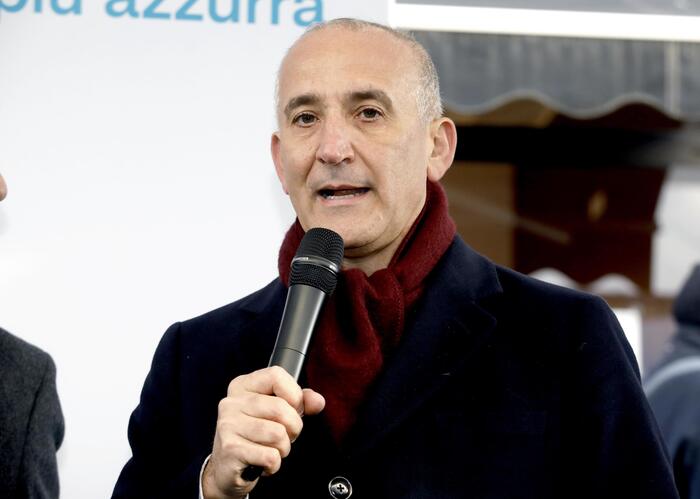Master plan for the energy transition: Höhenkirchen now has guidelines
Created: 09/27/2022, 09:00
By: Stefan Weinzierl
Open-space photovoltaic systems: According to the guidelines, they could be built along the S-Bahn route.
© Marijan Murat
An expert gives a guide to Höhenkirchen-Siegertsbrunn: PV systems and the heating network are particularly important for climate neutrality in the community.
Höhenkirchen-Siegertsbrunn – The self-proclaimed climate protection community of Höhenkirchen-Siegertsbrunn now has a guideline on how the energy transition can succeed in the town – according to Herbert Palm, even as effectively as possible.
The professor at Munich University of Applied Sciences and head of the Institute for Sustainable Energy Systems handed over an energy use plan to the municipality, which he and his team developed over a good year and a half.
The bottom line: in order to become climate-neutral, the community must first and foremost break new ground in heat supply.
Because: "The heat sector is the stepchild of the energy transition," says Palm.
According to calculations by Palms in Höhenkirchen, 154 gigawatt hours of energy are currently consumed per year.
A large part of it is converted into heat.
Heating is still primarily with natural gas and heating oil.
According to Palm, about half of the CO2 emissions are also due to the heating sector.
Although the expert predicts that the annual energy requirement will fall to around 102 gigawatt hours by the year 2045 as a result of the energetic renovation of the buildings, the heating requirement will remain the dominant issue.
Heat requirement big topic
According to Palms, who lives in Höhenkirchen-Siegertsbrunn himself, this is where the big opportunity lies.
In theory, the municipality could supply itself fivefold with alternative energy sources - and the greatest potential lies in the heating sector.
Therefore, the municipality should push ahead with the development of a heating network with the highest priority.
The construction of a biomass thermal power station could contribute to this in the short term, but in the long term the network should be fed by deep geothermal energy.
"This creates long-term security through independence," emphasized Palm.
The use of geothermal energy also has "the greatest effect" when you look at the cost-benefit ratio.
As far as the power grid is concerned, according to Palm, large open-space photovoltaic systems are the most effective for the energy transition - for example along the S-Bahn route or on agricultural land.
Wind turbines cannot replace these PV systems, but they can complement them.
Palm called for investing around 20 million euros in the construction of open-space PV systems and to build wind turbines.
Not easy to handle projects
The energy plan, Palm warned, is only of real use if it takes the form of zoning and zoning plans.
If the municipality also implements the recommendations in reality.
At the same time, the expert is well aware that it will not be easy for a small community like Höhenkirchen-Siegertsbrunn to handle such large-scale projects - especially financially.
Palm estimates that building a heating network that supplies 30 percent of the community will cost between 18 and 27 million euros.
If you don't wait for a geothermal connection, but if you start with a biomass heating network, you can realize this in five years.
As far as geothermal energy is concerned, the municipality has two options: to join Stadtwerke München or to initiate a geothermal project itself.
You might have to find investors and other communities as partners.
In addition to the two major measures - heating network and open-space PV systems - Palm suggested to the municipality that private households should also be brought on board for the energy transition.
For example, citizens should be encouraged to build private PV systems, to improve the energy efficiency of buildings and to connect them to the heating network.









